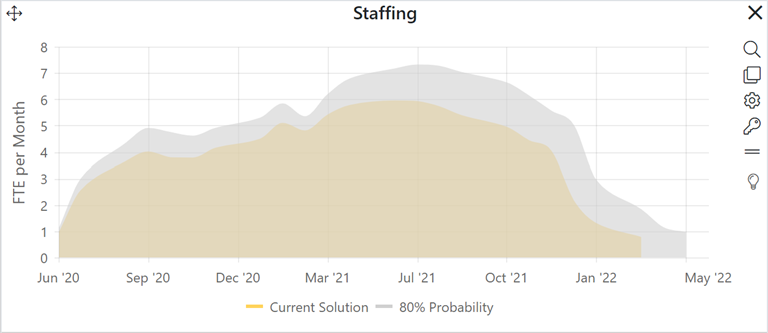
At the time most estimates are performed, detailed design is incomplete and major decisions about how the system will be designed, coded, tested, and delivered have not yet been made. Faced with imperfect information, estimators must supply educated guesses – hopefully based on sound requirements and performance data from completed projects - about the final delivered size, productivity, team size, and schedule. Because the inputs to the estimate are uncertain, the final outcomes are also uncertain.
When we estimate that a project will most likely take 6 months and 8 full-time staff to execute, we really should say, “Based on our analysis and past performance data, we expect the project to take 6 months and use 8 people, but the schedule could vary by as much as 15% and the budget by up to 20%.” But all too often, clients and management expect “single point” estimates based more on optimism than careful risk analysis.
Estimates are performed because we’re not certain what will happen as the project progresses, yet the business must commit to delivering a fully functioning system within a specified budget and time frame. Resources and funds don’t magically appear just when they’re needed: they must be planned for and secured in advance. The risk is that the final cost, schedule, or quality of projects in the portfolio may deviate from our original commitments by an unacceptable amount.
To deal with this problem, effective software estimators
actively assess estimation uncertainty and use it to manage risk. This
approach provides both a workable project plan and a reasonable buffer in case
the planned scope, productivity, or staffing deviate from their estimated
values. On the chart below, the current solution (yellow staffing curve) and
risk buffered, contingency solution (grey staffing curve) are
displayed.

Quantifying risk and accounting for it in a systematic way helps firms determine how much contingency (or management reserve) is needed to protect against factors like scope growth, lower than anticipated productivity, or technical challenges that keep teams from executing project plans as originally intended. When risk mitigation is an explicit part of the estimate, we can set reasonable client and management expectations and negotiate practical project plans with a higher likelihood of success.
SLIM-Collaborate’s Contingency profiles and dashboard allow businesses to create reusable contingency profiles, apply them to existing estimates, and calculate appropriate management reserve. You can use the Contingency profiles and dashboard to develop risk-buffered bids, calculate and display one or more “worst case” scenarios based on project uncertainty and desired risk protection, set realistic expectations, and negotiate work plans and commitments that are achievable in light of past performance, changing market conditions, and client needs.
This chapter provides a high-level overview of SLIM-Collaborate’s contingency features. More detailed information is available in the Dashboards, Back Office, and Estimation Service chapters of this user guide. For additional background on how SLIM-Suite tools handle risk, see the Uncertainty, Probability, and Risk video on the QSM web site.